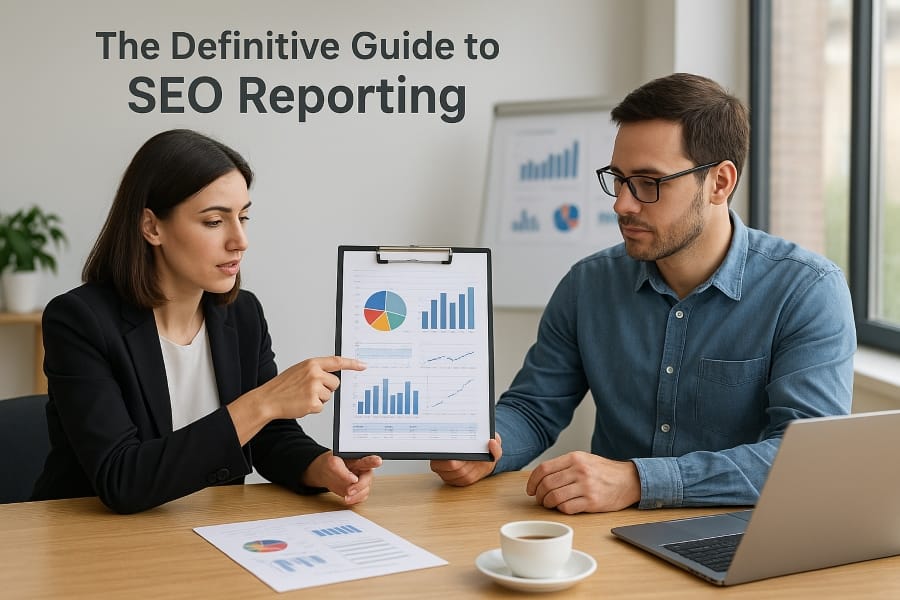Table of Contents
How to Create an SEO Roadmap for Your Website
SEO (Search Engine Optimization) is the process of improving your website’s visibility and relevance for search engines and users. A well-planned SEO strategy can help you attract more organic traffic, generate more leads, and increase your conversions.
But how do you plan and execute an effective SEO strategy? This is where an SEO roadmap comes in handy.
An SEO roadmap is a document that outlines your SEO goals, the steps you need to take to achieve them, and the timeline and resources you need to allocate for each step. An SEO roadmap can help you:
- Align your SEO efforts with your business objectives and target audience
- Identify and prioritize the most impactful SEO tasks and opportunities
- Assign and track the progress of your SEO tasks and responsibilities
- Communicate and collaborate with your team and stakeholders on your SEO plan
- Measure and evaluate the results of your SEO actions
In this blog post, we will show you why an SEO roadmap is essential for your website, how to create one, and some tips for prioritizing tasks and collaborating effectively.
A- What You Need for an SEO Roadmap
Before you start creating your SEO roadmap, you need to have some essential elements in place. These include:
An SEO audit: An SEO audit is a comprehensive analysis of your website’s current performance, strengths, weaknesses, and opportunities for improvement. An SEO audit can help you identify the technical, content, and off-page issues that affect your website’s ranking and user experience. You can use various tools such as [Bing Webmaster Tools] or [Google Search Console] to conduct an SEO audit.
An SEO strategy: An SEO strategy is a document that defines your SEO goals, target audience, keywords, competitors, and metrics. An SEO strategy can help you align your SEO actions with your business objectives and user needs. You can use tools such as [Bing Keyword Research Tool] or [Google Keyword Planner] to conduct keyword research and competitor analysis.
An SEO tool: An SEO tool is a software or platform that helps you perform various SEO tasks such as keyword research, content optimization, link building, rank tracking, reporting, etc. An SEO tool can help you automate and streamline your SEO workflow and monitor your results. There are many SEO tools available in the market such as [SEMrush], [Moz], [Ahrefs], etc.
B- Steps to Create Your SEO Roadmap
Once you have the essential elements for your SEO roadmap, you can follow these steps to create one:
1. Prioritize
The first step in creating your SEO roadmap is to prioritize the most important and urgent SEO tasks and opportunities for your website. You can use various frameworks such as [Eisenhower Matrix], [MoSCoW Method], or [RICE Scoring Model] to prioritize your SEO tasks based on factors such as impact, urgency, cost, effort, etc.
For example, using the RICE scoring model, you can assign a score to each SEO task based on four criteria:
Reach: How many users or pages will be affected by this task?
Impact: How much will this task improve your website’s ranking or user experience?
Confidence: How confident are you that this task will have the expected impact?
Effort: How much time, money, or resources will this task require?
You can then multiply the reach, impact, and confidence scores and divide by the effort score to get the final RICE score for each task. The higher the RICE score, the higher the priority.
For example, suppose you have these four SEO tasks:
Fix broken links
Optimize title tags
Create a sitemap
Publish a blog post
You can assign a RICE score to each task as follows:
Task | Reach | Impact | Confidence | Effort | RICE Score |
Fix broken links | 1000 (pages) | 3 (high) | 80% | 2 (hours) | 1200 |
Optimize title tags | 500 (pages) | 3 (high) | 90% | 5 (hours) | 540 |
Create a sitemap | 1 (website) | 2 (medium) | 100% | 1 (hour) | 200 |
Publish a blog post | 100 (users) | 1 (low) | 50% | 10 (hours) | 5 |
Based on the RICE scores, you can prioritize the SEO tasks as follows:
Fix broken links (highest priority)
Optimize title tags (second priority)
Create a sitemap (third priority)
Publish a blog post (lowest priority)
2. Assign and Estimate
The second step in creating your SEO roadmap is to assign and estimate the resources and time required for each SEO task. You can use tools such as [Trello], [Asana], or [Jira] to create and manage your SEO tasks and assign them to the responsible team members or stakeholders. You can also use tools such as [Harvest], [Toggl], or [Clockify] to track and estimate the time spent on each SEO task.
For example, using Trello, you can create a board for your SEO roadmap and add lists for each priority level. You can then add cards for each SEO task and assign them to the relevant team members. You can also add labels, due dates, checklists, attachments, comments, etc. to each card to provide more details and context.
3. Do the Paperwork
The third step in creating your SEO roadmap is to do the paperwork. This means defining your headings and tasks for each SEO task and documenting them in a clear and concise manner. You can use tools such as [Google Docs], [Microsoft Word], or [Notion] to create and share your SEO documentation.
For example, using Google Docs, you can create a document for each SEO task and include the following information:
Heading: A short and descriptive title for the SEO task
Description: A brief overview of the purpose, scope, and expected outcome of the SEO task
Subtasks: A list of the specific actions or steps required to complete the SEO task
Dependencies: A list of the other SEO tasks or resources that are related or required for the SEO task
Status: A mark or indicator of the current progress or completion of the SEO task
For example, here is a possible document for the SEO task of fixing broken links:
4- Re-prioritize, Assign and Schedule Your Tasks
The fourth and final step in creating your SEO roadmap is to re-prioritize, assign, and schedule your tasks. This means reviewing your SEO tasks regularly and adjusting their priority, assignment, and timeline based on the changing needs and circumstances of your website, business, and users. You can use tools such as [Google Calendar], [Microsoft Outlook], or [Calendly] to create and manage your SEO schedule.
For example, using Google Calendar, you can create a calendar for your SEO roadmap and add events for each SEO task. You can then invite the relevant team members or stakeholders to each event and set reminders, notifications, etc. You can also sync your calendar with other tools such as Trello, Asana, Jira, etc. to keep track of your SEO tasks and deadlines.
Crafting a Winning SEO Roadmap for 2025 and Beyond
A well-defined SEO roadmap is essential for businesses looking to thrive in the ever-evolving digital landscape. By setting clear goals, conducting thorough keyword research, and implementing a comprehensive SEO strategy, you can significantly improve your website’s visibility and drive organic traffic.
HITS Web SEO Write: Your Partner in SEO Success
HITS Web SEO Write is a leading digital marketing agency that specializes in creating and executing effective SEO roadmaps. Our team of experts will work closely with you to develop a customized plan that aligns with your business objectives. We offer a range of services, including:
- Keyword Research: Identifying high-traffic keywords relevant to your target audience.
- On-Page SEO: Optimizing your website’s content, structure, and meta tags.
- Off-Page SEO: Building high-quality backlinks to enhance your website’s authority.
- Technical SEO: Ensuring your website is technically sound and easily crawlable by search engines.
By partnering with HITS Web SEO Write, you can ensure that your SEO strategy is on track to deliver exceptional results. Contact us today to learn more about how we can help you achieve your digital marketing goals.




